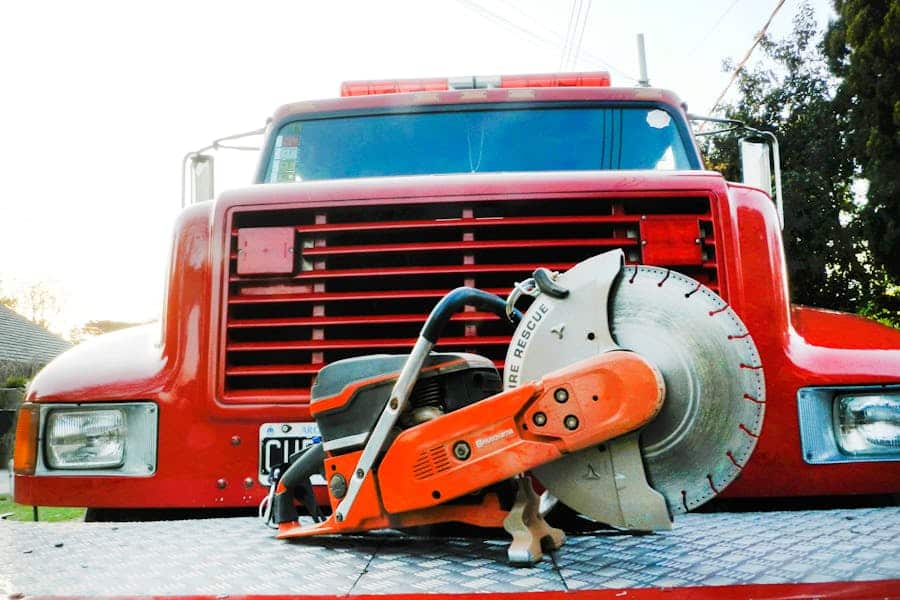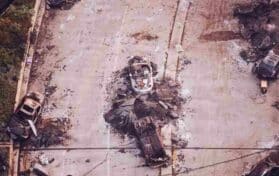
The concept of flying cars has captivated imaginations for decades, often portrayed as a futuristic marvel or even an unrealistic fantasy. Yet, as technology advances, these aerial vehicles are nearing practical application, not just for personal transportation but also for critical functions like emergency services and disaster relief. Flying cars, with their unique ability to bypass road congestion and traverse difficult terrain, could offer groundbreaking solutions to some of the most pressing challenges in emergency response. This article explores how flying cars could potentially revolutionize the fields of medical emergencies, disaster recovery, and search and rescue, bringing life-saving interventions to people in need with unprecedented speed and efficiency.
Speed and Access: Game-Changers for Medical Emergencies
One of the most powerful advantages flying cars offer is speed. In medical emergencies, every second counts, and delays in reaching victims or delivering crucial supplies can make the difference between life and death. Current ambulances, though equipped with advanced medical gear and staffed by skilled professionals, still face the limitations of congested urban streets, rural distance, and, at times, impassable roads. With flying cars, these barriers could be virtually eliminated.
Imagine a future where a flying car, equipped with medical supplies, could reach a cardiac arrest patient across a congested city in minutes rather than the critical half-hour that it might currently take by road. Equipped with defibrillators, blood plasma, and even advanced telecommunication systems, these flying ambulances could offer stabilization on-site or in transit while connecting with remote medical teams. For cases where every moment is vital, flying cars could bridge the critical gap between hospital and patient, significantly increasing survival rates in situations like cardiac arrest, severe trauma, or stroke.
Flying cars could also address medical needs in remote areas with poor road infrastructure, where accessing medical services can already be an ordeal. By reaching isolated communities quickly, these vehicles could deliver essential healthcare services to people who otherwise face long travel times to the nearest medical facilities. The potential applications go beyond urgent care; flying cars could also transport routine medical supplies like vaccines, medications, and diagnostic equipment to areas that currently lack consistent healthcare access, promoting equitable healthcare access across vast regions.
Enhanced Capabilities in Disaster Relief Operations
Natural disasters, such as earthquakes, hurricanes, and floods, often wreak havoc on infrastructure, rendering roads impassable and delaying relief efforts. In these scenarios, reaching affected areas quickly and delivering essential supplies can drastically improve survival rates and reduce suffering. Traditionally, helicopters are relied upon for such tasks; however, they come with high operational costs, are dependent on available landing zones, and are constrained by the availability of trained pilots. Flying cars, potentially automated or operated with simpler controls, could offer a more cost-effective, accessible alternative to helicopters in such disaster zones.
Consider a scenario where a flying car network could be activated immediately after a major disaster. Swarms of flying cars could deliver food, water, first aid, and medical supplies directly to stranded communities, bypassing blocked or destroyed roadways. These vehicles outfitted with cutting-edge navigation systems and sensors, could operate autonomously, coordinating routes to distribute aid efficiently. For example, after a hurricane, flying cars could pinpoint neighborhoods that have been cut off by flooding, enabling rapid assistance that could be crucial for survival in the early days following a disaster.
In addition to delivering supplies, flying cars could also serve as emergency transport for evacuees. They could quickly airlift vulnerable individuals, such as the elderly, injured, or those with limited mobility, to safe locations. All these functions are not so distant – if you want to check out what a flying car in 2025 will be able to do, you already can. Equipped with seating arrangements adaptable to medical transport, they could safely transport individuals requiring special care, addressing a critical gap in traditional evacuation logistics. This would enable disaster response teams to prioritize high-risk individuals while managing large-scale evacuation more efficiently.
Revolutionizing Search and Rescue Missions
Search and rescue missions are another field where flying cars could prove transformative. Ground teams often face dangerous and time-consuming challenges to locate and rescue people in remote or treacherous terrains like mountainous regions, dense forests, and large water bodies. Currently, helicopters are used in many search and rescue efforts, but their operational constraints and high costs limit their resources. Flying cars, designed for vertical takeoff and landing, could be dispatched as a complementary or even primary resource for locating missing persons and aiding search efforts.
In wilderness areas, flying cars equipped with thermal imaging and GPS technology could quickly scan large sections of terrain to identify the locations of stranded or lost individuals. These vehicles could be deployed in fleets, covering wider areas with greater agility than traditional search teams. Furthermore, their small size and advanced maneuverability could allow them to navigate challenging environments where larger aircraft might struggle to operate.
For example, in snowy mountains or densely forested areas, flying cars could pinpoint individuals and deliver essential survival supplies, such as food, blankets, and medical kits, while waiting for the main rescue team to reach the location. This capability could be critical in extreme environments, where stranded individuals face exposure to harsh conditions. By providing immediate assistance, flying cars could drastically improve the odds of survival, especially in situations where every hour of delay increases the risk.
Challenges and the Path Forward
While the potential for flying cars in emergency services is exciting, several challenges remain before they can be widely adopted. Regulatory hurdles, particularly regarding air traffic management and safety protocols, are significant. Flying cars, like drones, would need to operate in shared airspace with other aircraft, requiring stringent safety measures and robust traffic control systems. Additionally, public perception and trust will play a major role. Before flying cars become a mainstay in emergency response, people must feel confident in their reliability, safety, and efficacy.
There are also technical challenges to consider. Battery life, payload capacity, and all-weather functionality will need to be refined to ensure that flying cars can perform effectively in various emergency scenarios. Innovations in battery technology and materials science will be critical to address these limitations, enabling longer flights, heavier loads, and better resilience to adverse conditions.
Yet, as these challenges are addressed, the path for flying cars in emergency services and disaster relief becomes clearer. As these vehicles enter real-world testing phases, we may see them rolled out in controlled, pilot scenarios, such as in remote or disaster-prone regions. Over time, as technology advances and regulations adapt, flying cars could become invaluable assets in saving lives, restoring communities, and helping humanity tackle its toughest challenges.
Conclusion: A New Frontier for Emergency Services
Flying cars hold the promise of transforming emergency services and disaster relief, opening new avenues for rapid response and lifesaving interventions. With the ability to reach the unreachable and provide aid where conventional methods falter, these vehicles could redefine the limits of what emergency response teams can accomplish. While challenges remain, the vision of flying cars swooping into disaster zones, delivering supplies to isolated communities, and rescuing stranded individuals is no longer confined to the pages of science fiction. As technology continues to advance, this vision may soon become a reality, offering hope and resilience to those facing the most urgent needs.





